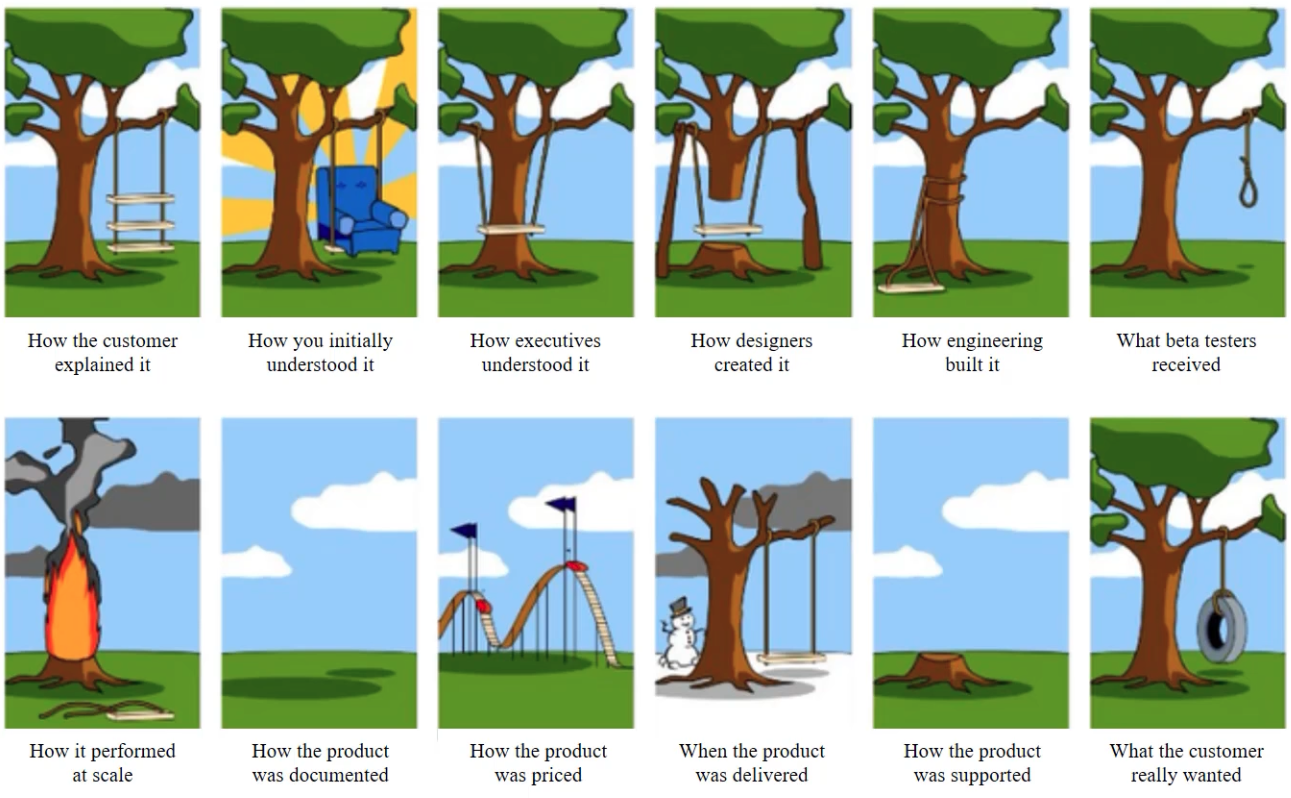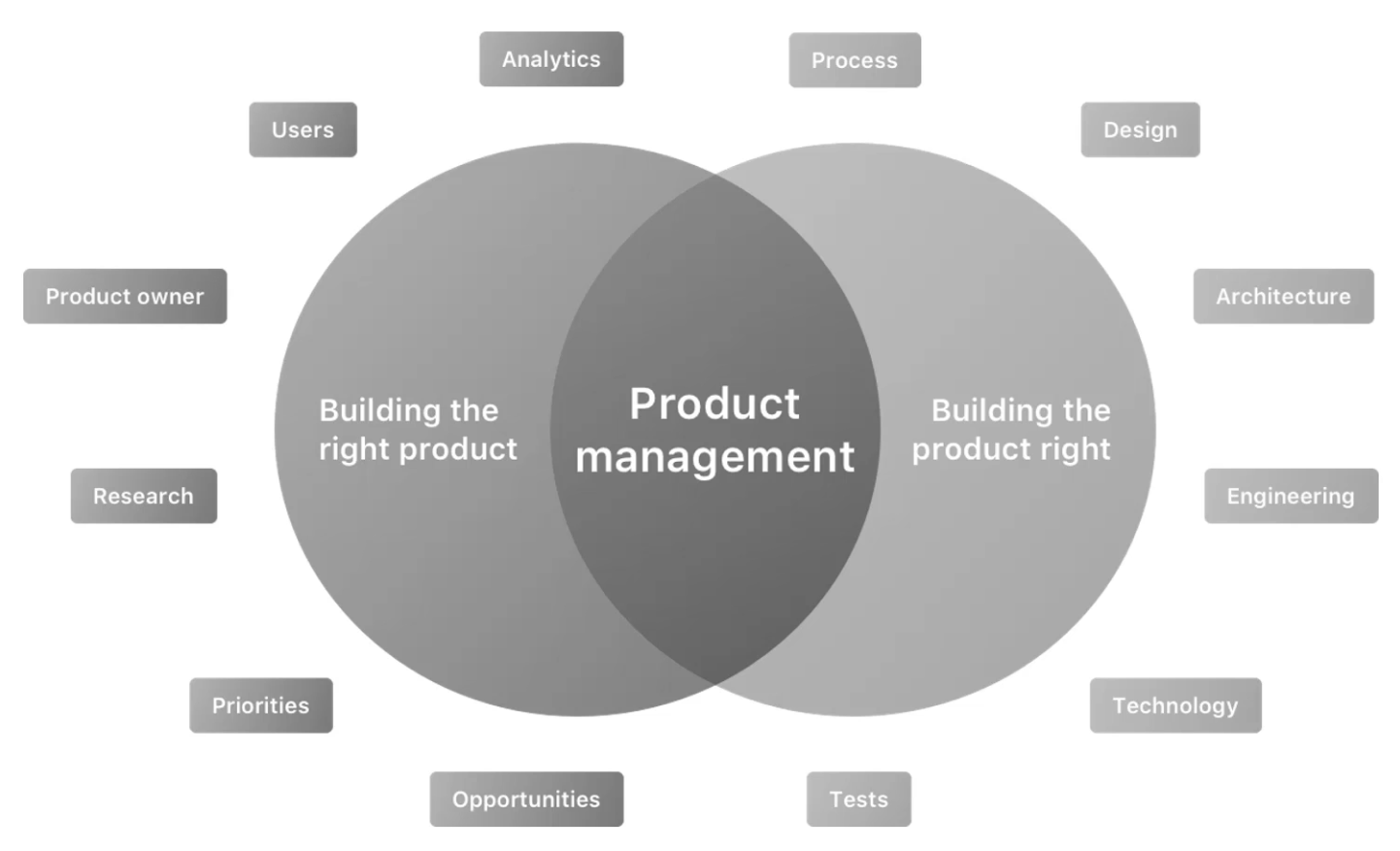Product Management Fundamentals (University of Maryland)
https://www.facebook.com/groups/222766198976941/
Introduction
Customer Wants

Product Manager Role
- No standard background
- Types of product manager: Technical, Strategic, Growth
- Owns Product Requirements Document, roadmap, team communications, budget
- Intersection of Customer (what do they want?) + Technology (is it technically viable?) + Business (is it commercially viable?)
- Support Design, Development, Marketing (Commercial)

Starts at Opportunities and moves clockwise
Product Development Lifecycle
- Find and Plan: What’s the problem?
- Inputs (current and future): customers, company expertise, competition
- Design: How to solve it?
- Build: How best to build the solution?
- Product manager is the communications link between the developers and customers
- Share: How to deliver the solution?
- Sales and marketing
- Benefits > features, capabilities > stats, differentiation, value proposition
- Assess: Did the solution solve the problem?
- Metrics, customer satisfaction
Working with Business
- Find and validate opportunity, communicate to stakeholders, get support
Golden Circle
What (Result) builds on How (Process) builds on Why (Purpose)
5Cs
- Company
- Customers
- Collaborators
- Competitors
- Climate
Create an Opportunity Hypothesis
- What’s the goal?
- Scientific Method: Observe → Question → Hypothesis → Prediction → Test → Iterate
- Use Value Proposition Canvas
- Validating the idea (data, market research, A/B tests)
Customer Development
- Customer Discovery: problem-solution fit, proposed MVP, proposed funnels
- Customer Validation: product-market fit (are there sufficient customers who have a high likelihood of buying my solution?), business model, sales and marketing roadmap
- Customer Creation: scale execution (growing demand, growing supply)
- Company Building: scale organisation, scale operations
Customer Journey
Conduct interviews
- Current state: what’s the impact/frequency of current problem?
- Motivations: do they like my solution?
- Obstacles: why wouldn’t they use my solution?
Product Requirements Document (PRD)
- Title
- Change History
- Overview (what, why)
- Objectives (for customer and company)
- Success Metrics
- Messaging
- Timeline
- Personas
- User Scenarios
- Requirements (features with explanation)
- Features Out (not included with explanation)
- Designs
- Open Issues
- Q&A
Roadmapping
Tools: Roadmunk / Monday / AHA / ProductPlan
Working with Design
Design Process
- User research
- Information architecture
- Interaction design (focus on user experience)
- Prototyping (software: Proto.io / InVision / Balsamiq / Axure RP / Sketch / Adobe XD)
- Visual design
- Content strategy
Conduct usability testing throughout
Dieter Rams’s 10 Principles of Good Design
- Is innovative
- Makes a product useful
- Is aesthetic
- Makes a product understandable
- Is unobtrusive
- Is honest
- Is long-lasting
- Is thorough down to the last detail
- Is environmentally friendly
- Involves as little design as possible
Working with Engineering
Project Lifecycles
- Waterfall: Requirement → Design → Implement → Verify → Maintain
- Agile: Sprints: Plan → Design → Build → Rest → Review → Launch
- Scrum: Product Backlog → Planning → Sprint Backlog → Sprint (team self-manages) → Review
- Kanban: based on priority, not time
Tools
Market Development and Commercialisation
Marketing Challenges
- Don’t market purely based on the Product Development phase; have a separate but connected Customer Development process.
- Get customer feedback, but don’t confuse customer segments (i.e. Early Adopters vs Early Majority), and don’t confuse reason to sell with reason to buy.
- Focus on the customer, tell them a story of how it will relieve their pain.
4Ps and SAVE
4Ps: Too product-centric, not customer-centric
4Ps → SAVE
- Product → Solution
- Place → Access
- Price → Value
- Promotion → Education
Customer Development Manifesto
- There Are No Facts Inside Your Building, So Get Outside
- Pair Customer Development with Agile Development
- Failure is an Integral Part of the Search for the Business Model
- If You’re Afraid to Fail You’re Destined to Do So
- Iterations and Pivots are Driven by Insight
- Validate Your Hypotheses with Experiments
- Success Begins with Buy-In from Investors and Co-Founders
- No Business Plan Survives First Contact with Customers
- Not All Startups Are Alike
- Startup Metrics are Different from Existing Companies
- Agree on Market Type – It Changes Everything
- Fast, Fearless Decision-Making, Cycle Time, Speed and Tempo
- If it’s not About Passion, You’re Dead the Day You Opened your Doors
- Startup Titles and Functions Are Very Different from a Company’s
- Preserve Cash While Searching. After It’s Found, Spend
- Communicate and Share Learning
- Startups Demand Comfort with Chaos and Uncertainty
Market Types
- Existing: Better performance/service, high credibility
- Reframe: Same customers, new problem
- New: Largest chasm
Influences: type of customer, market size, launch type, competitive barriers, positioning, sales model, sales cycle
Chasm from Early Adopters (visionaries - happy with a MVP) to Early Majority (pragmatists - need a whole product including additional support and training)
Market Development
- Solve a problem
- Customer’s problem recognition types: latent (unknown), passive (little care), active (searching), vision (solving)
- Find a beachhead
- Use informed intuition
- Market segmentation
- Use customer personas
- Use case scenarios: customer vs consumer, life before vs after
- Expanding the market (Bowling Pin strategy)
- same segment different applications (repair TVs, then phones, then laptops)
- different segment same application (one town, then one region, then one country)
